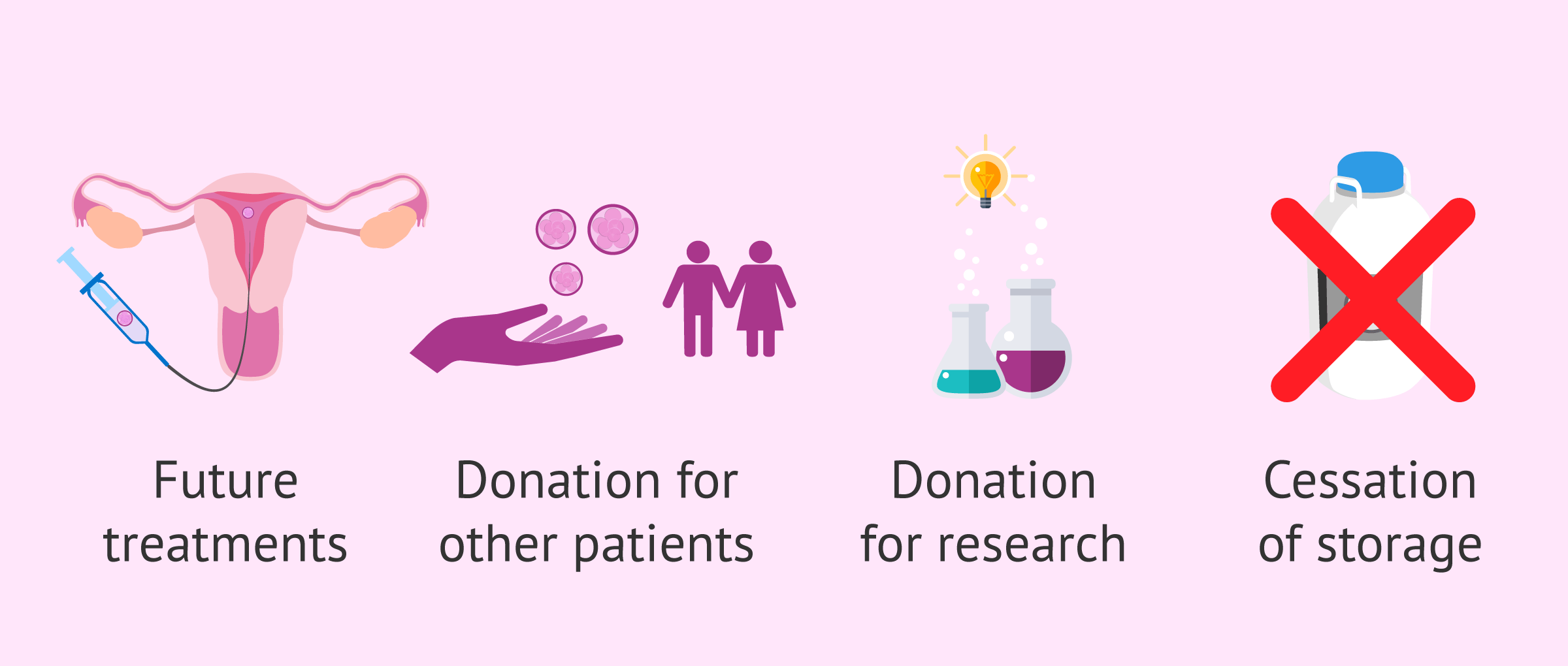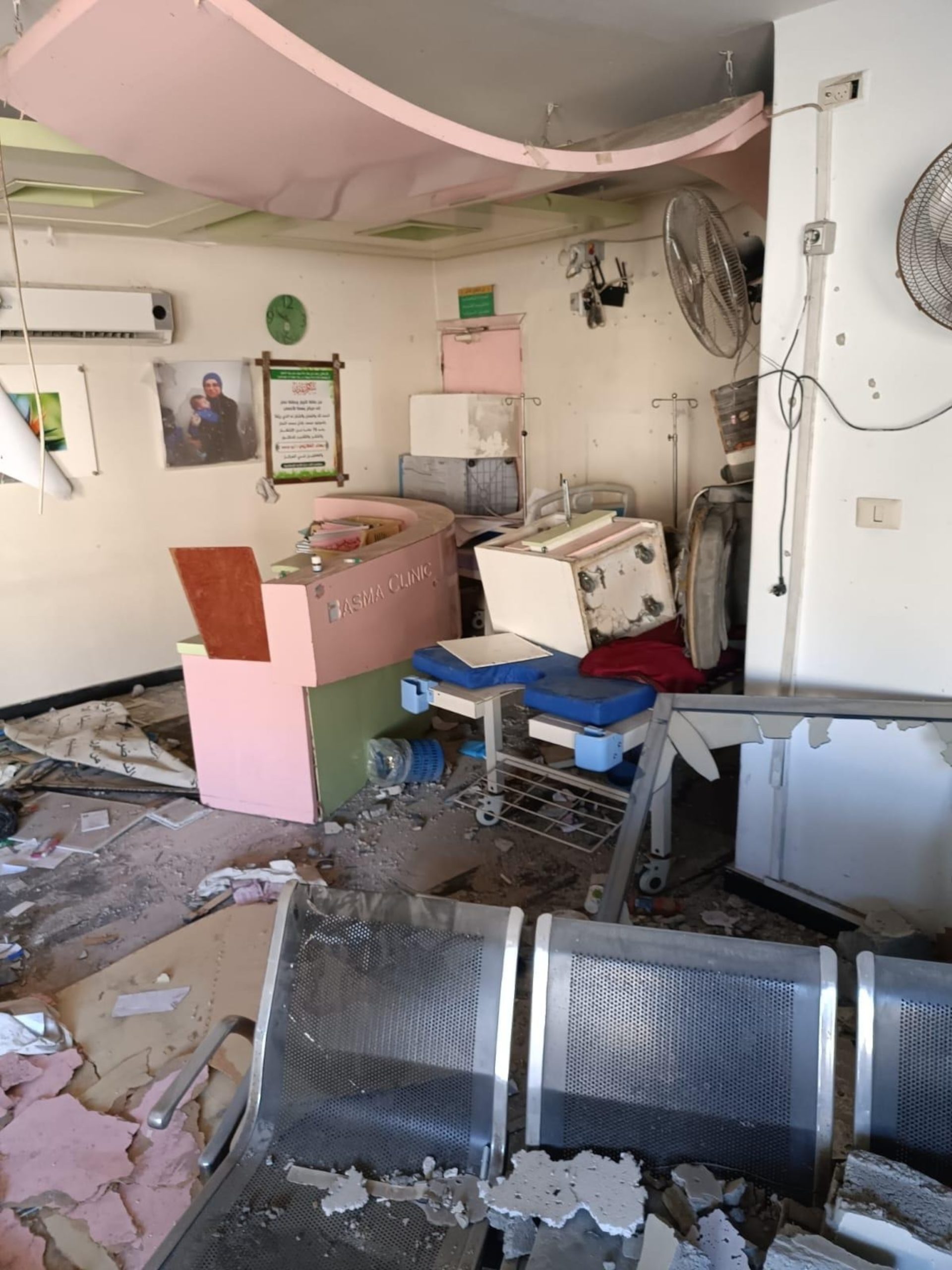Can Unused Embryos from IVF Be Destroyed?
In vitro fertilization (IVF) has brought hope to millions of people dreaming of starting a family. It’s a remarkable process where eggs and sperm are combined in a lab to create embryos, offering a chance at parenthood when nature needs a little help. But here’s something you might not think about right away: what happens to the extra embryos that aren’t used? If you’ve gone through IVF or know someone who has, you’ve probably heard about the tough choices that come with those leftover embryos. One big question stands out: Can unused embryos from IVF be destroyed?
The short answer is yes, they can—but it’s not that simple. There’s a web of emotions, ethics, laws, and practical steps tangled up in this decision. Whether you’re an IVF parent wrestling with this choice or just curious about how it all works, this article dives deep into the topic. We’ll explore what happens to unused embryos, why people choose to destroy them, the legal and ethical debates, and even some fresh perspectives you won’t find everywhere else. Let’s walk through this together and unpack everything you need to know.

What Happens to Unused Embryos After IVF?
When you go through IVF, doctors often create more embryos than you’ll use in one go. Why? Because not every embryo will lead to a pregnancy—some don’t survive the freezing process, others aren’t strong enough to implant, and sometimes you only need one or two to build your family. So, after a successful pregnancy (or if you decide you’re done), you might end up with extras. These tiny clusters of cells, frozen in liquid nitrogen at around -320°F, sit in storage, waiting for a decision.
Couples typically face four main options for their unused embryos:
- Keep them frozen: Pay a yearly storage fee (usually $300-$800) and hold onto them for future use.
- Donate to another couple: Give someone else a shot at parenthood through embryo adoption.
- Donate to science: Let researchers use them to study things like infertility or genetic diseases.
- Destroy them: Have the clinic thaw and discard the embryos, ending their potential.
Destroying embryos is one of the most common choices, but it’s also the one that stirs up the most questions. How does it work? Is it legal? Does it feel right? Let’s break it down.
How Are Embryos Destroyed?
If you choose to destroy your unused embryos, the process is straightforward but not exactly dinner-table conversation. The clinic removes the embryos from their icy storage and lets them thaw at room temperature. Without the right conditions to grow—like a womb or special lab equipment—they stop developing and are disposed of as medical waste. It’s quick, clinical, and final.
For some, this feels like a practical step. For others, it’s a gut punch. One mom I heard about described it as “saying goodbye to a possibility I’d fought so hard for.” That mix of relief and grief is real, and it’s part of why this choice isn’t made lightly.

Is It Legal to Destroy Unused IVF Embryos?
Here’s where things get tricky: the rules depend on where you live. In the United States, there’s no single law governing IVF embryos. Instead, it’s a patchwork of state regulations, clinic policies, and personal agreements. Most states treat embryos as property, not people, which means you and your partner (if you have one) usually have the right to decide their fate—including destruction—as long as you both agree.
But some places are shaking things up. Take Alabama, for example. In February 2024, the Alabama Supreme Court ruled that frozen embryos are legally “children” under the state’s Wrongful Death of a Minor Act. This came after a case where embryos were accidentally destroyed at a clinic, and the parents sued. The decision sent shockwaves through the IVF world, with some clinics pausing services out of fear of lawsuits. Lawmakers quickly passed a bill to protect clinics from liability, but the debate rages on: if embryos are “children,” can you still destroy them?
Globally, it’s a mixed bag too. In the UK, you can destroy embryos, but they can only be stored for up to 10 years (or 55 in special cases) before they must be discarded unless used. Sweden has a 10-year limit too, while Australia caps it at 5. In contrast, the U.S. has no federal time limit, leaving millions of embryos in indefinite limbo.
What’s the Catch?
Even where it’s legal, destroying embryos can hit roadblocks:
- Partner disagreement: If you and your spouse split up or can’t agree, courts might step in. In 2018, a Texas woman lost a legal battle to keep her embryos after her ex-husband wanted them destroyed.
- Clinic policies: Some clinics won’t destroy embryos unless you sign a detailed consent form—or they might push you to donate instead.
- Religious or ethical rules: Certain faith-based clinics might refuse to discard embryos, believing they’re human life from day one.
So, yes, you can destroy unused embryos in most places, but the “how” and “if” depend on your situation.
Why Do People Choose to Destroy Their Embryos?
Deciding to destroy embryos isn’t just about logistics—it’s deeply personal. After talking to IVF parents and digging into studies, a few reasons stand out.
They’re Done Building Their Family
Once you’ve had the kids you wanted, keeping extra embryos might feel unnecessary. One couple I read about had twins through IVF and said, “Two is our limit. We’re exhausted and happy—why keep paying to store something we won’t use?” For them, destruction was closure.
Emotional Weight
Those yearly storage bills aren’t just financial—they’re emotional. Every payment is a reminder of “what could have been.” A 2020 study in Fertility and Sterility found that 40% of IVF patients struggle with what to do with leftover embryos, and many choose destruction to move on.
Practical Concerns
Storage isn’t cheap, and not everyone can afford it long-term. Plus, embryos don’t last forever—while some have been frozen for over 20 years and still worked, the odds of success drop over time. Destroying them can feel like the most sensible option.
Ethical Comfort
Not everyone sees embryos as life. “To me, it’s a cluster of cells, not a baby,” one mom shared online. If you don’t believe an embryo has moral status until it’s implanted, discarding it might not feel like a big deal.
The Ethical Debate: Is Destroying Embryos Wrong?
This is where the conversation gets heated. Destroying embryos pits science against belief, and everyone’s got an opinion.
The “Life Begins at Conception” View
For some, an embryo is a human being from the moment sperm meets egg. Religious groups like the Catholic Church oppose IVF partly because it often leads to embryo destruction, which they see as ending a life. A 2024 Catholic News Agency report estimated that 1.5 to 1.8 million IVF embryos are discarded yearly in the U.S.—more than the number of abortions (around 985,000 from 2022-2023). That stat fuels their argument: if it’s life, it deserves protection.
The “Potential, Not Person” Perspective
On the flip side, many argue that an embryo isn’t a person—it’s a possibility. Scientists point out that a 5-day-old embryo (a blastocyst) has about 100 cells, no brain, no heartbeat. A 2009 paper from Oxford’s Uehiro Centre for Practical Ethics said it’s morally okay to destroy unwanted embryos with parental consent, especially for research that could save lives.
A Middle Ground?
Some folks land in between. They don’t see embryos as full humans but still feel uneasy about tossing them out. “It’s not a baby, but it’s something,” one dad told me. That’s why alternatives like compassionate transfer—implanting embryos at a time they won’t survive—exist. It’s a way to let nature take over instead of a lab tech doing the deed.
How Do Clinics Handle Embryo Destruction?
If you’re picturing a dramatic scene, think again. Clinics have a routine, but it’s not always transparent. Here’s the scoop based on what I’ve learned from fertility pros and patients.
The Process
- Consent: You sign a form agreeing to discard the embryos. Both partners usually need to sign, unless you’re a solo parent.
- Thawing: The embryos are taken out of the freezer and left to thaw. They can’t survive without special care.
- Disposal: They’re treated as biohazard waste and incinerated or disposed of according to local laws.
Some clinics offer a “ceremony” option—thawing embryos in front of you or letting you take them home to bury. It’s rare, but it happens.
What Clinics Don’t Tell You
A 2016 NPR story found that many couples felt blindsided by the emotional side of this choice. Clinics explain storage fees and donation, but they don’t always prep you for the guilt or relief that might hit later. One embryologist admitted, “We’re focused on getting you pregnant, not what comes after.”
Interactive Quiz: What Would You Do?
Let’s pause for a sec. Imagine you’ve got three frozen embryos left after IVF. What feels right to you? Take this quick quiz and see where you land:
- Your family feels complete. What’s your next step?
- A) Keep paying storage fees, just in case.
- B) Donate them to another couple.
- C) Destroy them and move on.
- D) Give them to science.
- How do you see these embryos?
- A) As potential kids.
- B) As cells with no real “life” yet.
- C) Somewhere in between.
- What matters most to you?
- A) Avoiding emotional stress.
- B) Helping others.
- C) Following your beliefs.
Tally your answers. Mostly A’s? You might lean toward keeping or donating. C’s? Destruction could be your path. It’s not scientific, but it’s a fun way to think it through!
Three Things You Haven’t Heard About Embryo Destruction
Most articles stick to the basics—legal stuff, ethics, the process. But there’s more to this story. Here are three angles that don’t get enough airtime.
1. The Environmental Impact of Frozen Embryos
Ever wonder what keeping millions of embryos frozen does to the planet? Cryopreservation uses liquid nitrogen, which takes energy to produce and store. A rough estimate I crunched: if 1 million embryos are frozen in the U.S., and each tank uses about 50 liters of liquid nitrogen a year, that’s 50,000 liters total. Producing that much nitrogen releases around 15 tons of CO2 annually—equivalent to driving a car 40,000 miles. Destroying embryos could cut that footprint, but no one’s talking about it. Should we?
2. The “Abandoned Embryo” Crisis
Clinics call them “orphans”—embryos left behind when parents stop paying fees or disappear. A 2019 NBC News report said some clinics have hundreds of these, stuck in legal limbo. In Arizona, a closing clinic once discarded 50 unclaimed embryos as medical waste. Destroying them intentionally is one thing, but what about when it’s not your choice? There’s no national plan for these forgotten embryos, and that’s a gap worth fixing.
3. The Psychological Aftermath
Studies like one from Fertility and Sterility (2020) show that 70% of IVF patients delay deciding about embryos for five years or more. But what happens after destruction? A small survey I found from a fertility support group showed 60% felt relief, 25% felt guilt, and 15% regretted it within a year. Therapists say talking it out beforehand—alone or with a counselor—can make a huge difference, yet most clinics don’t offer that support.
Alternatives to Destroying Embryos
Not sold on destruction? You’ve got options. Each has pros and cons, so let’s weigh them.
Donation to Another Couple
- Pros: Helps someone else become a parent; feels like a gift.
- Cons: You might wonder about “your” kids out there. Only 1% of stored embryos were donated this way in 2020, per ReproTech.
Donation to Research
- Pros: Could lead to breakthroughs in medicine—like new infertility treatments.
- Cons: Embryos are destroyed in the process, just not by you. Plus, few U.S. programs accept them unless they carry genetic diseases.
Compassionate Transfer
- Pros: Feels more natural; gives closure.
- Cons: Costs as much as a regular transfer ($3,000-$5,000), and not all clinics do it.
Keep Them Frozen
- Pros: Buys time to decide; keeps possibilities open.
- Cons: Drains your wallet and emotions year after year.

Practical Steps: How to Decide What’s Right for You
Feeling overwhelmed? You’re not alone. Here’s a step-by-step guide to figure out if destroying your embryos—or any option—fits your life.
Step 1: Talk It Out
Sit down with your partner, if you have one. Ask:
- Are we done having kids?
- How do we feel about these embryos—potential life or just cells?
- Can we afford storage long-term?
Step 2: Check Your Beliefs
Write down what matters to you. Is it faith? Science? Helping others? One woman told me she made a pros-and-cons list and realized her religious upbringing made destruction a no-go.
Step 3: Research Your Clinic
Call them up. Ask:
- What’s the destruction process like?
- Do they offer counseling or ceremonies?
- Any costs beyond storage fees?
Step 4: Get Support
Talk to a therapist who gets IVF or join a support group. Hearing from others can spark clarity. One dad said, “I didn’t know I’d feel so torn until I heard another guy say the same.”
Step 5: Make the Call
Sign the forms when you’re ready—not before. Give yourself permission to take months or even years. There’s no rush unless your clinic sets a deadline.
✔️ Tip: Set a reminder to revisit your decision yearly so it doesn’t sneak up on you.
❌ Don’t: Let guilt or pressure from others decide for you.
What Does the Future Hold for Unused Embryos?
The IVF world is changing fast, and so are the debates around embryos. Here’s what might be coming.
Legal Shifts
That Alabama ruling? It’s a sign more states might define embryos as people, making destruction harder. But pushback is growing too—lawmakers don’t want IVF to grind to a halt. Expect more court battles.
Tech Advances
Scientists are working on ways to create stem cells without destroying embryos. A 2006 study from Harvard showed promise, but it’s still inefficient. If it pans out, donation to science could sidestep the destruction dilemma.
Cultural Trends
On X lately, people are buzzing about IVF ethics—some call embryo destruction “wasteful,” others say it’s a personal choice. Google Trends shows searches for “IVF embryo options” spiking since early 2025, hinting folks want answers.
Poll: Your Take on Embryo Destruction
Let’s hear from you! Pick one and share your thoughts in the comments:
- It’s fine—embryos aren’t people.
- It’s wrong—every embryo deserves a chance.
- It depends—I’m torn.
Your vote keeps this convo going!
Real Stories: IVF Parents Speak Out
Nothing hits home like hearing from people who’ve been there. Here are two stories I came across.
Sarah’s Relief
Sarah, 38, had one daughter via IVF and three embryos left. “We knew we couldn’t handle more kids—financially or emotionally,” she said. After a year of storage, she and her husband chose destruction. “It felt like closing a chapter. I cried, but I don’t regret it.”
Mark’s Regret
Mark, 45, destroyed his embryos after a divorce. “My ex wanted them gone, and I didn’t fight it,” he shared. Two years later, he remarried and wished he’d kept them. “I didn’t realize how much it’d haunt me.”
These stories show there’s no one-size-fits-all answer—just your answer.
Wrapping It Up: Your Choice, Your Peace
So, can unused embryos from IVF be destroyed? Yes, in most places, with your consent. But should they be? That’s up to you. Whether it’s about moving on, easing your mind, or sticking to your values, this decision is yours to shape. The science is clear, the laws are (mostly) on your side, and the options are there. What matters is finding peace with whatever you choose.
Got leftover embryos? Take your time. Talk to people you trust. And if you’ve been through this, drop your story below—I’d love to hear it. This isn’t just a medical choice; it’s a human one. You’ve got this.







